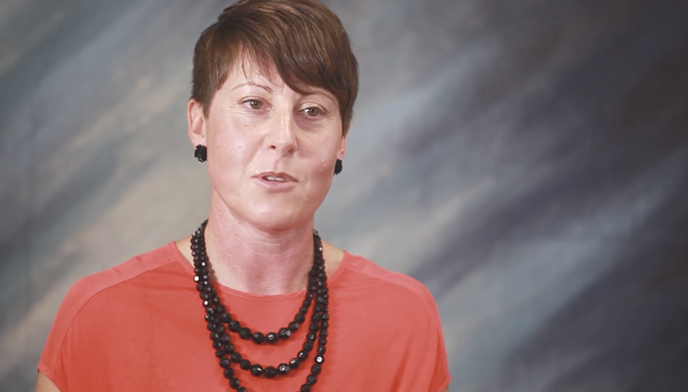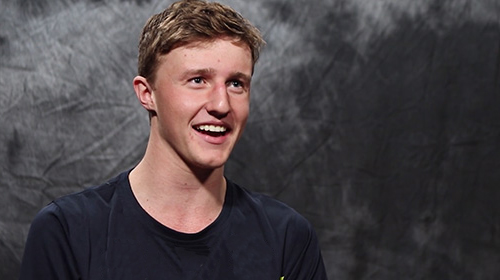GETTING WITH THE FLOW
Every sport has it’s own lingo. On first hearing some of the words can be quite confusing. When on the pool deck most of us aren’t always keen to ask what they mean. You’re also likely to break the flow of training or the swim meet.
So it’s best to talk to your coach or a teammate away from the pool. Check out some popular expressions below. If you’re a parent they could help keep the conversation flowing.
-
Bands
A rubber band that goes around your ankles while you’re using a pull buoy (and sometimes without). Makes sure you don’t kick and encourages use of your arms and core to keep afloat.
-
Blow out
A type of training drill where you blow out all the air in your lungs before you start a maximum effort. To mimic a racing situation where you don’t have any breath left but you must sprint. For example, the last lap of a race.
-
Circle swimming
Swimming either clockwise or anticlockwise rather than straight down the middle of the lane.
-
Distance Per Stroke (DPS)
The length/distance you take for each individual stroke. DPS is a common drill used where a swimmer must focus on the length and efficiency of each stroke.
-
Even Split
Where you swim the first and second half of a race in the same time.
-
Individual Medley Order (IMO)
Training sets or laps done in the order butterfly, backstroke, breaststroke, freestyle. Can also be RIMO when done in reverse.
-
Main Form
Your best stroke other than freestyle.
-
Negative Split
Where the second half of a race is faster than the first. Often used as a method of training where you swim the second half of a distance in a quicker time.
-
Psych sheet
Once entries close for a competition, a psych sheet is created which lists all of the entered swimmers in a particular swimming event in ranking order based on their entry time.
-
Seeded heat
The final three heats at a swimming competition have the fastest swimmers in the middle lanes. For example, fastest lane 4 final heat, second fastest lane 4 second last heat.
-
Stroke Rate (SR)
How many strokes you take in a minute. You’ll have a much faster stroke rate in a 50m race compared with a 200m race. It’s good to know what stroke rate you need to train at.
-
Threshold Pace
To put simply, a training intensity which is faster than aerobic and slower than your maximum. A pace you can tolerate the build-up of lactate. Training at your threshold pace will improve your fitness, however it is different for everyone, so speak to your coach on how to find yours.
-
Best Average (BA)
Holding the best time possible for a number of repeats. For example, 10 x 50m BA.
-
Breakout
A breakout is the transition from the streamlined position in a dive and tumble turn into the swimming portion of the lap.
-
Descend
Getting faster either by lap or by set.
-
Dry start
Racing without a warm up in the pool.
-
Form Stroke
Form stroke means any stroke but freestyle.
-
Lactate Threshold Set
Training thresholds refer to the level of intensity needed in order to stress the body enough to cause an adaptation or improvement in performance. Training thresholds are measured by intensity and can be either a % MHR or % VO2max. %MHR is used most frequently so will be the focus here. There are generally two training thresholds: the aerobic threshold and the anaerobic threshold
-
Marshalling
The place you assemble before your race. Usually a Technical Official or event volunteer will mark your name off before you walk out to the blocks.
-
Paddles
Fins for your hands. A flat plastic plate that goes under your hand to help you with your stroke power and efficiency. Often used with a pull buoy.
-
Seed
Your position going into a competition based on your entry time. For example, if you are the No.1 seed you have the fastest entry time.
-
Stroke Count (SC)
How many strokes you do per lap. Many training sessions rely on counting strokes each 50m. It can also mean to focus on the count rather than the time. For example, 50m butterfly stroke count.
-
Taper
A reduction in volume of swimming before a major competition to help the body adapt and be in the best form for racing. There are many different types and theories on taper, ask your coach!
-
Turn start
A turn start means starting a lap with a turn. For example, a tumble turn, touch turn (breaststroke/butterfly) rather than pushing off the wall as you usually would.
-

COMMUNICATION
Watch this videoTalking to adults can be tricky, but they can’t read your mind. So it’s important to be upfront about any personal or team issues. And also be prepared to listen.
With: Emma McKeon, Mel Gorman, Jodie Notting /Henry, Georgia Ridler (Sports Psychologist), Jim Fowlie (Coach) & Tracey Menzies (Coach)
-

MAKE YOUR BODY WORK FOR YOU
Watch this videoWhen it comes to body shape there are no rules. Your future is not dictated by what you look like or what shape you are. It’s what you do with your body that matters.
With: Cate Campbell, Jade Neilson, Sally Hunter, Ellie Cole & Nicole Livingstone
-

PUBERTY (MALES)
Watch this videoYou may feel uncoordinated when you go through growth spurts. Having patience and knowing that body shapes will change, and vary from person to person is important.
With: Elijah Winnington, Brendan Hall, Dr Mike Nagel PhD, Brenton Rickard, Cameron McEvoy & James Magnussen
-

SELF-ESTEEM
Watch this videoBuilding your own self-identity can be challenging. It’s about being more than a swimmer. It can often include overcoming bullying or embracing disability.
With: Georgia Ridler, Brenton Rickard, Michael Klim & Brendan Hall